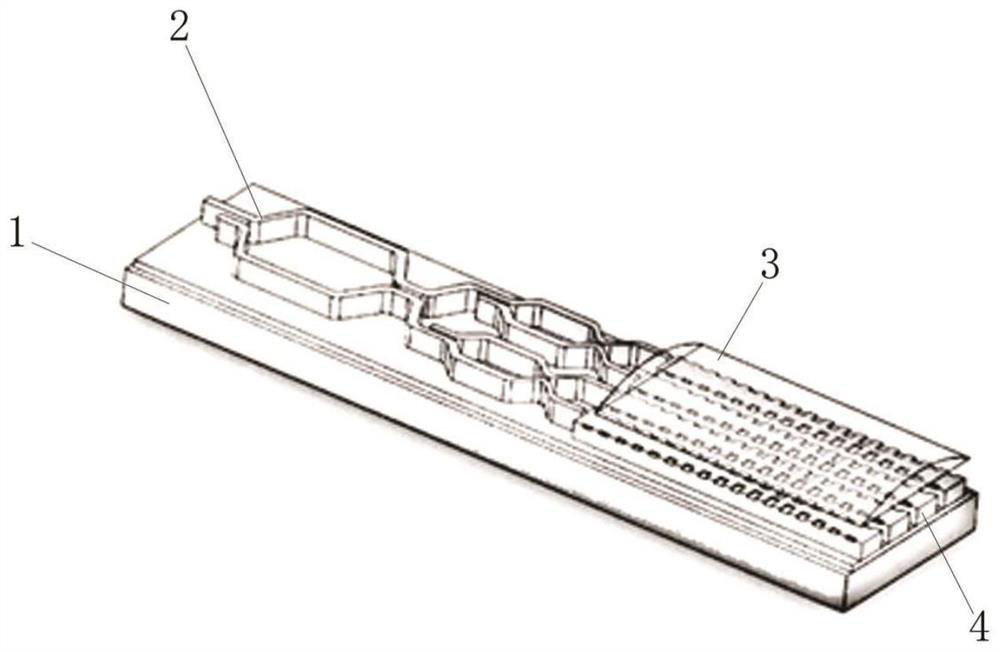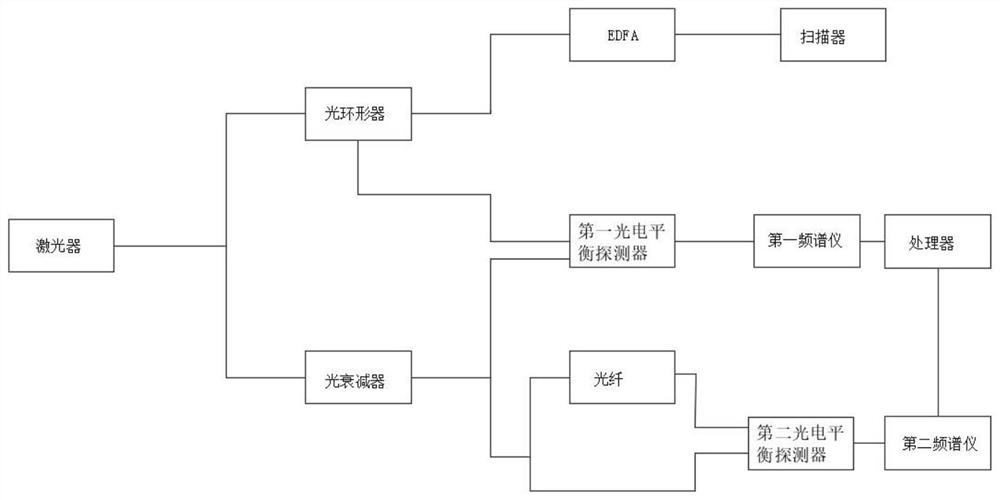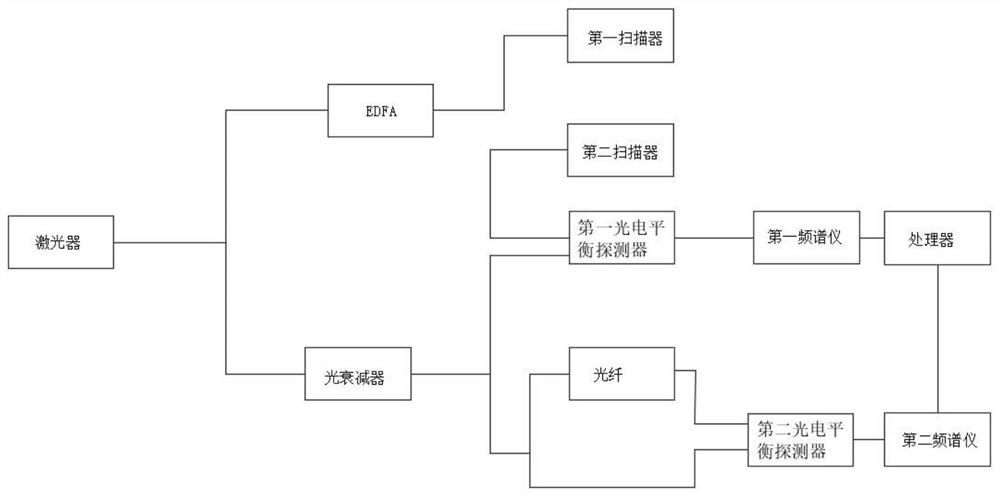Scanner and coaxial and non-coaxial radar systems using same
A technology for scanners and balanced detectors, which is applied in the field of coaxial and non-coaxial radar systems, can solve the problems of low resolution, high price of Mems, and large volume, so as to improve detection accuracy, facilitate cost reduction and mass production, and improve The effect of detection distance
- Summary
- Abstract
- Description
- Claims
- Application Information
AI Technical Summary
Problems solved by technology
Method used
Image
Examples
Embodiment 1
[0043] Such as figure 2 As shown, a coaxial laser radar system is integrated by connecting working parts with multiple splitters: the specific connection method is as follows:
[0044] The laser is used to emit laser light, output an optical signal, and transmit the optical signal to the optical circulator and the optical attenuator respectively through the first splitter to obtain the first optical signal and the local optical signal;
[0045] An optical circulator is used to realize bidirectional communication of optical signals; in this embodiment, the optical circulator has 3 interfaces, wherein the first interface is connected to the first splitter, the second interface is connected to an optical amplifier, and the third interface is connected to the optical amplifier. The interface is connected to the detection line to facilitate subsequent calculation of the scanning distance;
[0046] an optical amplifier, configured to receive the optical signal transmitted by the f...
Embodiment 2
[0053] Such as image 3 As shown, a non-coaxial lidar system is integrated by connecting working parts with multiple splitters:
[0054] The laser is used to emit laser light, output an optical signal, obtain a third optical signal and a local optical signal through the first splitter, and send the third optical signal and the local optical signal to the optical amplifier and the optical attenuator respectively;
[0055] The optical amplifier is used to receive the third optical signal, amplify it, and then send it to the scanner; wherein, noise removal and power enhancement are performed through the optical amplifier and the grating antenna group in the scanner to increase the measurement distance, Reduce external interference;
[0056] a first scanner, configured to output a third optical signal to free space;
[0057] The second scanner is configured to receive an optical signal in free space to obtain a fourth optical signal;
[0058] Optical attenuator, which receives ...
PUM
 Login to View More
Login to View More Abstract
Description
Claims
Application Information
 Login to View More
Login to View More - R&D
- Intellectual Property
- Life Sciences
- Materials
- Tech Scout
- Unparalleled Data Quality
- Higher Quality Content
- 60% Fewer Hallucinations
Browse by: Latest US Patents, China's latest patents, Technical Efficacy Thesaurus, Application Domain, Technology Topic, Popular Technical Reports.
© 2025 PatSnap. All rights reserved.Legal|Privacy policy|Modern Slavery Act Transparency Statement|Sitemap|About US| Contact US: help@patsnap.com



